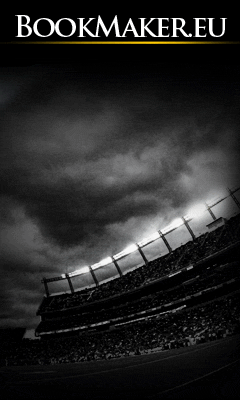Officials' Jurisdictions, Positions, and Duties
Referee - General oversight and control of game. Gives signals for all fouls and is final authority for rule interpretations. Takes a position in backfield 10 to 12 yards behind line of scrimmage, favors right side (if quarterback is right-handed passer). Determines legality of snap, observes deep back(s) for legal motion. On running play, observes quarterback during and after handoff, remains with him until action has cleared away, then proceeds downfield, checking on runner and contact behind him. When runner is downed, Referee determines forward progress from wing official and, if necessary, adjusts final position of ball.
On pass plays, drops back as quarterback begins to fade back, picks up legality of blocks by near linemen. Changes to complete concentration on quarterback as defenders approach. Primarily responsible to rule on possible roughing action on passer and if ball becomes loose, rules whether ball is free on a fumble or dead on an incomplete pass.
During kicking situations, Referee has primary responsibility to rule on kicker's actions and whether or not any subsequent contact by a defender is legal. The Referee stays wide and parallel on punts and will announce on the microphone when each period has ended.
Umpire - Primary responsibility to rule on players' equipment, as well as their conduct and actions on scrimmage line. Lines up approximately four to five yards downfield, varying position from in front of weakside tackle to strongside guard. Looks for possible false start by offensive linemen. Observes legality of contact by both offensive linemen while blocking and by defensive players while they attempt to ward off blockers. Is prepared to call rule infractions if they occur on offense or defense. Moves forward to line of scrimmage when pass play develops in order to insure that interior linemen do not move illegally downfield. If offensive linemen indicate screen pass is to be attempted, Umpire shifts his attention toward screen side, picks up potential receiver in order to insure that he will legally be permitted to run his pattern and continues to rule on action of blockers. Umpire is to assist in ruling on incomplete or trapped passes when ball is thrown overhead or short. On punt plays, Umpire positions himself opposite Referee in offensive backfield - 5 yards from kicker and one yard behind.
Head Linesman - Primarily responsible for ruling on offside, encroachment, and actions pertaining to scrimmage line prior to or at snap. Generally, keys on closest setback on his side of the field. On pass plays, Linesman is responsible to clear his receiver approximately seven yards downfield as he moves to a point five yards beyond the line. Linesman's secondary responsibility is to rule on any illegal action taken by defenders on any delay receiver moving downfield. Has full responsibility for ruling on sideline plays on his side, e.g., pass receiver or runner in or out of bounds. Together with Referee, Linesman is responsible for keeping track of number of downs and is in charge of mechanics of his chain crew in connection with its duties.
Linesman must be prepared to assist in determining forward progress by a runner on play directed toward middle or into his side zone. He, in turn, is to signal Referee or Umpire what forward point ball has reached. Linesman is also responsible to rule on legality of action involving any receiver who approaches his side zone. He is to call pass interference when the infraction occurs and is to rule on legality of blockers and defenders on plays involving ball carriers, whether it is entirely a running play, a combination pass and run, or a play involving a kick. Also assists referee with intentional grounding.
Line Judge - Straddles line of scrimmage on side of field opposite Linesman. Keeps time of game as a backup for clock operator. Along with Linesman is responsible for offside, encroachment, and actions pertaining to scrimmage line
prior to or at snap. Line Judge keys on closest setback on his side of field. Line Judge is to observe his receiver until he moves at least seven yards downfield. He then moves toward backfield side, being especially alert to rule on any back in motion and on flight of ball when pass is made (he must rule whether forward or backward). Line Judge has primary responsibility to rule whether or not passer is behind or beyond line of scrimmage when pass is made. He also assists in observing actions by blockers and defenders who are on his side of field. After pass is thrown, Line Judge directs attention toward activities that occur in back of Umpire. During punting situations, Line Judge remains at line of scrimmage to be sure that only the end men move downfield until kick has been made. He also rules whether or not the kick crossed line and then observes action by members of the kicking team who are moving downfield to cover the kick. The Line Judge will advise the Referee when time has expired at the end of each period. Also assists referee with intentional grounding and determines whether pass is forward or backward.
Field Judge - Operates on same side of field as Line Judge, 20 yards deep. Keys on wide receiver on his side. Concentrates on path of end or back, observing legality of his potential block(s) or of actions taken against him. Is prepared to rule from deep position on holding or illegal use of hands by end or back or on defensive infractions committed by player guarding him. Has primary responsibility to make decisions involving sideline on his side of field, e.g., pass receiver or runner in or out of bounds.
Field Judge makes decisions involving catching, recovery, or illegal touching of a loose ball beyond line of scrimmage; rules on plays involving pass receiver, including legality of catch or pass interference; assists in covering actions of runner, including blocks by teammates and that of defenders; calls clipping on punt returns; and, together with Back Judge, rules whether or not field goal attempts are successful.
Side Judge - Operates on same side of field as Linesman, 20 yards deep. Keys on wide receiver on his side. Concentrates on path of end or back, observing legality of his potential block(s) or of actions taken against him. Is prepared to rule from deep position on holding or illegal use of hands by end or back or on defensive infractions committed by player guarding him. Has primary responsibility to make decisions involving sideline on his side of field, e.g., pass receiver or runner in or out of bounds.
Side Judge makes decisions involving catching, recovery, or illegal touching of a loose ball beyond line of scrimmage; rules on plays involving pass receiver, including legality of catch or pass interference; assists in covering actions of runner, including blocks by teammates and that of defenders; and calls clipping on punt returns. On field goals and point after touchdown attempts, he becomes a double umpire.
Back Judge - Takes a position 25 yards downfield. In general, favors the tight end's side of field. Keys on tight end, concentrates on his path and observes legality of tight end's potential block(s) or of actions taken against him. Is prepared to rule from deep position on holding or illegal use of hands by end or back or on defensive infractions committed by player guarding him.
Back Judge times interval between plays on 40/25-second clock plus intermission between two periods of each half; makes decisions involving catching, recovery, or illegal touching of a loose ball beyond line of scrimmage; is responsible to rule on plays involving end line; calls pass interference, fair catch infractions, and clipping on kick returns; together with Field Judge, rules whether or not field goals and conversions are successful; and stays with ball on punts.

